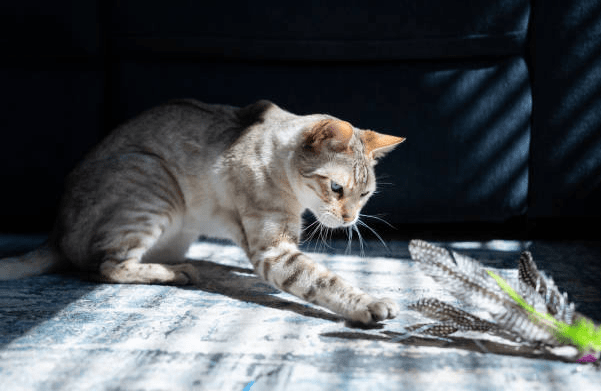Cats are known for their grace, elegance, and independent spirit, but even the most self-sufficient feline can benefit from a little grooming TLC. From maintaining a healthy coat to promoting overall well-being, regular grooming is an essential aspect of cat care that helps your furry friend look and feel their best. In this guide, we’ll explore the ins and outs of cat grooming, from techniques and tools to tips for a stress-free grooming experience.
Table of Contents
Understanding the Importance of Cat Grooming
Cat Grooming is not just about keeping your cat looking pristine; it’s also crucial for their health and comfort. Regular grooming helps remove loose fur, dirt, and debris from your cat’s coat, preventing matting and tangling that can lead to skin irritation and discomfort. Additionally, grooming allows you to check for signs of parasites, skin conditions, and other health issues, enabling early detection and intervention. Beyond physical health, grooming also promotes bonding between you and your cat, strengthening your relationship and trust.
Also Read: Top 5 Beautiful White Cat Breeds in 2024
Essential Grooming Tools and Supplies
Before embarking on a grooming session with your cat, it’s essential to gather the necessary tools and supplies. Some essential grooming items include:
- Cat Brush: Choose a brush appropriate for your cat’s coat type, such as a slicker brush for long-haired breeds or a bristle brush for short-haired cats.
- Comb: A fine-toothed comb can help remove tangles and mats, especially in long-haired cats.
- Nail Clippers: Invest in a pair of cat-specific nail clippers to trim your cat’s nails safely and prevent overgrowth.
- Cat Shampoo: Opt for a mild, hypoallergenic shampoo formulated specifically for cats to avoid skin irritation.
- Towels: Keep a stack of soft towels handy for drying your cat after a bath or grooming session.
- Treats: Use treats as positive reinforcement to reward your cat for good behavior during grooming.
Grooming Techniques for Cats
While some cats may enjoy the cat grooming process, others may be more reluctant participants. It’s essential to approach grooming with patience, gentleness, and respect for your cat’s boundaries. Here are some grooming techniques to help you and your cat have a positive grooming experience:
- Brushing: Start by gently brushing your cat’s coat in the direction of hair growth, focusing on one section at a time. Use a light touch to avoid causing discomfort, and be especially gentle around sensitive areas like the belly and armpits.
- Nail Trimming: Begin by getting your cat accustomed to having their paws handled before attempting to trim their nails. Use cat-specific nail clippers to trim the tips of the nails, taking care not to cut into them quickly, which can cause pain and bleeding. If your cat is resistant to nail trimming, consider seeking assistance from a professional groomer or veterinarian
- Bathing: While most cats are proficient self-groomers and may not require regular baths, there are occasions when bathing is necessary, such as if your cat gets into something sticky or dirty. Use lukewarm water and mild cat shampoo, and be sure to rinse thoroughly to remove all traces of shampoo. Towel-dry your cat gently, and avoid using a hairdryer, as the noise and heat can be frightening for cats.
- Ear Cleaning: Use a cotton ball dampened with a veterinarian-approved ear cleaning solution to gently wipe the outer ear canal and remove dirt and wax build-up. Avoid inserting anything into your cat’s ear canal, as this can cause injury or discomfort.
- Eye Care: Check your cat’s eyes regularly for signs of discharge, redness, or irritation. Use a soft, damp cloth to gently wipe away any crust or debris from the corners of the eyes. If you notice any persistent issues or changes in your cat’s eye health, consult with your veterinarian.
Tips for a Stress-Free Grooming Experience
Cat Grooming sessions can be stressful for some cats, especially if they are not accustomed to being handled or groomed. Here are some tips to help make grooming a positive experience for your feline friend:
- Start Early: Introduce cat grooming to your cat at a young age to help them become accustomed to the process.
- Be Patient: Approach cat grooming with patience and a calm demeanor, and be prepared to take breaks if your cat becomes anxious or agitated.
- Use Positive Reinforcement: Reward your cat with treats and praise for good behavior during grooming sessions, and avoid punishing or scolding them for resisting.
- Take It Slow: Gradually introduce new grooming techniques and tools to your cat, allowing them to become comfortable with each step before moving on to the next.
- Seek Professional Help: If you’re struggling to groom your cat at home or if your cat has specific grooming needs, consider seeking assistance from a professional groomer or veterinarian.
Conclusion
Cat grooming is an essential aspect of responsible pet care that contributes to your cat’s overall health, comfort, and well-being. By incorporating regular cat grooming into your cat care routine and employing gentle techniques and positive reinforcement, you can help your feline friend look and feel their best. Remember to tailor grooming sessions to your cat’s individual needs and preferences, and don’t hesitate to seek professional assistance if needed. With patience, love, and attention to detail, you can ensure that your cat enjoys a lifetime of pampered bliss.


